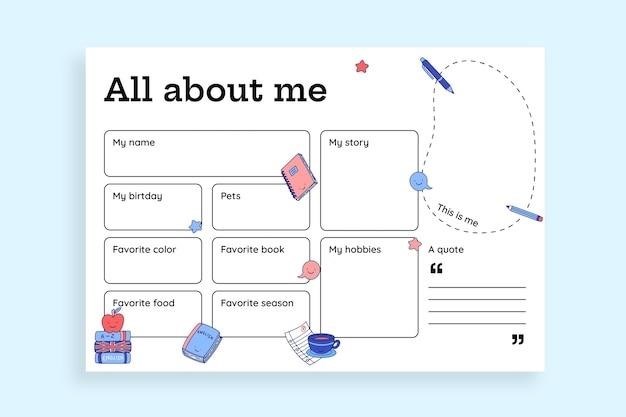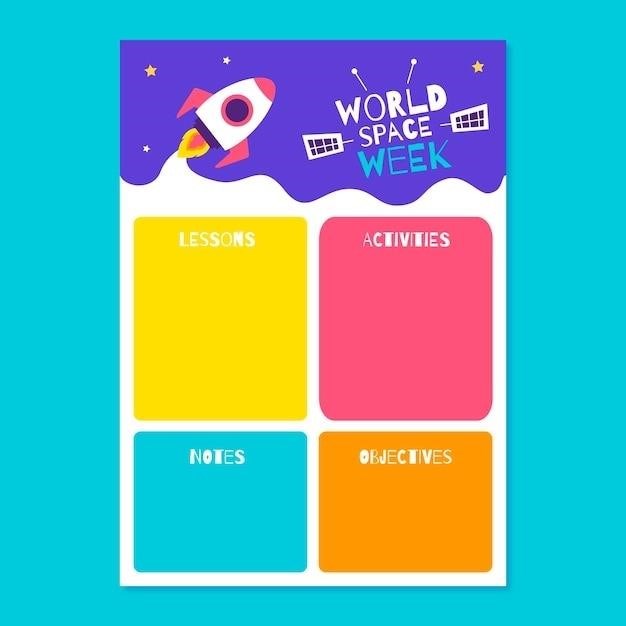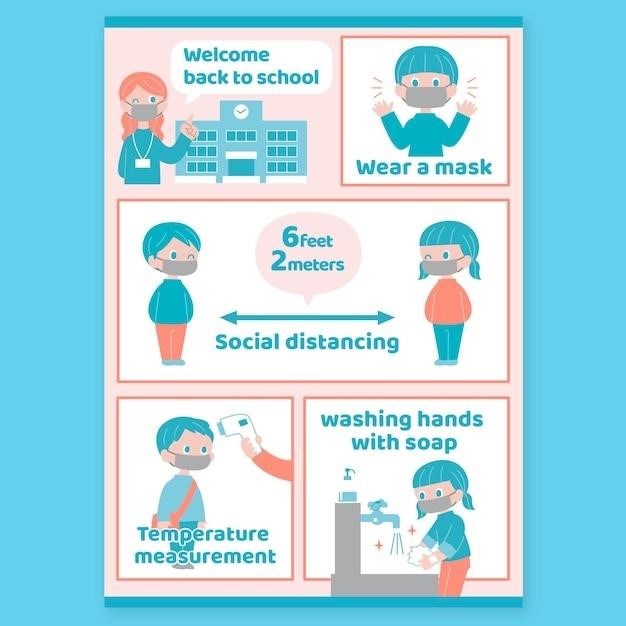This guide introduces SMART goals—Specific‚ Measurable‚ Achievable‚ Relevant‚ and Time-bound—a powerful tool for children․ Learn how to set effective goals‚ fostering self-belief and achievement․ Downloadable worksheets are available․
Defining SMART Goals
SMART goals are a proven method for achieving objectives‚ especially beneficial for children․ The acronym stands for Specific‚ Measurable‚ Achievable‚ Relevant‚ and Time-bound․ A Specific goal clearly defines what needs to be accomplished‚ leaving no room for ambiguity․ Measurable goals allow for tracking progress with quantifiable metrics․ Achievable goals are realistic and attainable‚ building confidence․ Relevant goals align with the child’s interests and overall development․ Finally‚ Time-bound goals set a clear deadline‚ promoting focus and urgency․ By incorporating these five elements‚ children learn to set meaningful and attainable goals‚ fostering a sense of accomplishment and responsibility․ This framework empowers them to break down large tasks into smaller‚ manageable steps‚ leading to greater success and improved self-esteem․ Free printable worksheets offer a structured approach for goal setting․
Benefits of SMART Goals for Children
Implementing SMART goals offers numerous advantages for children’s development․ Firstly‚ it cultivates a sense of accomplishment and boosts self-esteem as children achieve their objectives․ The structured approach enhances organization and planning skills‚ essential for future success; SMART goals also foster perseverance and resilience; facing challenges and overcoming obstacles builds character․ Furthermore‚ this method improves focus and time management‚ crucial skills applicable across various aspects of life․ Children learn to prioritize tasks and allocate time effectively‚ preventing overwhelm․ The process promotes a growth mindset‚ encouraging children to view challenges as opportunities for learning and improvement rather than setbacks․ Finally‚ SMART goal setting empowers children to take ownership of their progress‚ fostering independence and self-reliance․
Creating SMART Goals Worksheets for Kids
Design engaging‚ age-appropriate worksheets to help children understand and apply the SMART goal-setting process effectively․ Include fun activities for better engagement․
Worksheet Design⁚ Age Appropriateness
Tailoring SMART goal worksheets to a child’s developmental stage is crucial for effectiveness․ Younger children (preschool to early elementary) benefit from simple‚ visually appealing worksheets with large print‚ colorful images‚ and minimal text․ Activities like drawing or coloring can reinforce goal setting․ Older elementary and middle school students can handle more complex worksheets incorporating writing prompts‚ planning sections‚ and progress tracking charts; Consider using age-appropriate examples relevant to their interests and daily lives․ For example‚ younger kids might set goals around learning a new song or mastering a specific skill‚ while older children might focus on academic improvements or personal challenges․ Remember‚ the key is to make the process engaging and attainable for the child’s age group‚ ensuring they understand the SMART criteria and feel empowered to achieve their goals․ This approach fosters a positive association with goal setting and promotes self-efficacy․
Incorporating Fun Activities
Transforming SMART goal worksheets from mundane tasks into engaging experiences is key to motivating children․ Incorporate fun activities to make goal setting enjoyable․ For younger children‚ consider using stickers‚ stamps‚ or coloring pages to reward progress․ Interactive elements like mazes‚ puzzles‚ or matching games can make learning about SMART goals fun․ Older children might enjoy creating visual representations of their goals‚ such as mind maps or flowcharts․ Gamification can also enhance engagement․ For instance‚ create a points system where completing tasks earns points towards a reward․ Incorporating technology‚ like interactive apps or online goal trackers‚ can cater to children’s digital fluency․ Remember‚ the aim is to foster a positive association with goal setting‚ making it a fun and rewarding process rather than a chore․ This approach cultivates intrinsic motivation and increases the likelihood of goal achievement;
Examples of SMART Goals for Kids
This section provides examples of SMART goals‚ illustrating how to apply the framework to various aspects of a child’s life‚ from academics to personal development․
Academic Goals
Academic SMART goals for kids can significantly boost their learning․ For example‚ instead of a vague goal like “get better grades‚” a SMART goal might be⁚ “Increase my math test scores by 15% in the next two months by completing all homework assignments and reviewing notes daily․ I will track my progress using a weekly checklist and seek help from my teacher if needed․” Another example⁚ “Read one chapter of my assigned novel each night for the next week to finish the book by Friday․” These specific‚ measurable‚ achievable‚ relevant‚ and time-bound goals empower children to take control of their education‚ fostering a sense of accomplishment and increased confidence․ Remember to tailor goals to the child’s age and current abilities‚ ensuring they are challenging yet attainable․ This approach encourages a growth mindset and active participation in their learning journey‚ leading to better academic performance and overall success․
Personal Goals
Personal SMART goals for children extend beyond academics‚ fostering crucial life skills․ Instead of “be tidier‚” a SMART goal could be⁚ “Keep my bedroom clean by making my bed daily‚ putting away clothes after changing‚ and tidying up toys before bedtime․ I will check off each task on a daily chart for a week‚ rewarding myself with an extra 30 minutes of screen time at the weekend if I succeed․” Another example⁚ “Learn to ride my bike without training wheels by practicing for 15 minutes each Saturday and Sunday for the next four weeks․ My success will be measured by riding 50 yards without falling․” These goals teach responsibility‚ organization‚ and perseverance․ Remember to involve the child in setting their personal goals‚ ensuring they feel ownership and motivation․ Celebrating achievements‚ no matter how small‚ reinforces positive behaviors and builds self-esteem‚ promoting a healthy sense of independence and self-efficacy․

Utilizing SMART Goals in Education
Integrating SMART goals into education empowers students․ It fosters self-directed learning‚ boosts achievement‚ and cultivates essential life skills․ Classroom implementation strategies and assessment methods are key․
Classroom Implementation Strategies
Effectively integrating SMART goals into the classroom requires a multifaceted approach․ Begin by introducing the SMART acronym and its components (Specific‚ Measurable‚ Achievable‚ Relevant‚ Time-bound) in an age-appropriate manner‚ using relatable examples relevant to students’ lives and interests․ Incorporate interactive activities‚ such as brainstorming sessions or group work‚ to help students collaboratively set their goals․ Provide regular check-ins and feedback‚ allowing students to track their progress and make adjustments as needed․ Consider using visual aids‚ such as charts or progress trackers‚ to visually represent goal attainment․ Celebrate successes along the way to reinforce positive behavior and motivate continued effort․ Remember‚ the key is to create a supportive and encouraging environment where students feel empowered to set and achieve their goals․ This process fosters self-reliance‚ accountability‚ and a growth mindset—essential skills for academic and personal success․ Regularly review and revise goals to ensure they remain relevant and motivating․ Utilize a variety of goal-setting resources‚ such as printable worksheets‚ to support student goal creation and monitoring․
Assessing Goal Achievement
Evaluating the success of SMART goals for children requires a balanced approach that prioritizes both the outcome and the process․ Regularly scheduled check-ins‚ perhaps weekly or bi-weekly‚ are crucial․ These sessions should not focus solely on whether the goal was completely achieved but also on the effort and strategies employed․ Open-ended questions encourage self-reflection and honest assessment․ For example‚ “What challenges did you face?” or “What strategies worked well for you?” can be invaluable․ Qualitative data‚ such as student reflections and teacher observations‚ provides valuable insights into the learning process․ Quantitative data‚ like the completion of tasks or the achievement of milestones‚ can complement these qualitative assessments․ Celebrate both successes and the lessons learned from setbacks․ Remember‚ the ultimate aim is to foster a growth mindset‚ encouraging children to view challenges as opportunities for learning and improvement․ This holistic approach to assessment ensures that the focus remains on the child’s development‚ fostering resilience and a positive attitude towards goal setting․

Resources and Further Learning
Discover free printable worksheets and online goal-setting tools designed to help kids achieve their SMART goals effectively and enjoyably․
Free Printable Worksheets
Numerous websites offer free printable SMART goal worksheets for kids․ These resources often include age-appropriate templates‚ making goal setting accessible for various age groups․ Some worksheets guide children through the SMART criteria (Specific‚ Measurable‚ Achievable‚ Relevant‚ Time-bound)‚ helping them define their goals clearly․ Others incorporate fun activities like drawing or coloring‚ making the process engaging․ Look for worksheets that align with your child’s interests and developmental stage․ Many also provide space for tracking progress‚ reinforcing the importance of monitoring achievements․ Remember to choose worksheets that encourage positive reinforcement and celebrate accomplishments․ The readily available resources make it easy to find the perfect fit for your child’s needs‚ empowering them to achieve their goals․
Online Goal Setting Tools
Beyond printable worksheets‚ numerous online tools facilitate SMART goal setting for children․ Interactive platforms often gamify the process‚ making it more engaging for young learners․ These tools may include features like progress trackers‚ reward systems‚ and customizable goal templates․ Some platforms offer age-appropriate content‚ ensuring the complexity matches the child’s developmental level․ Parents and educators can use these tools to monitor progress and provide support․ The interactive nature of these online resources can make goal setting a more dynamic and motivating experience․ However‚ it’s crucial to choose reputable platforms prioritizing child safety and data privacy․ Explore options offering a balance of fun and effective goal-setting strategies․ Consider features such as visual aids and reminders to enhance engagement and success․



